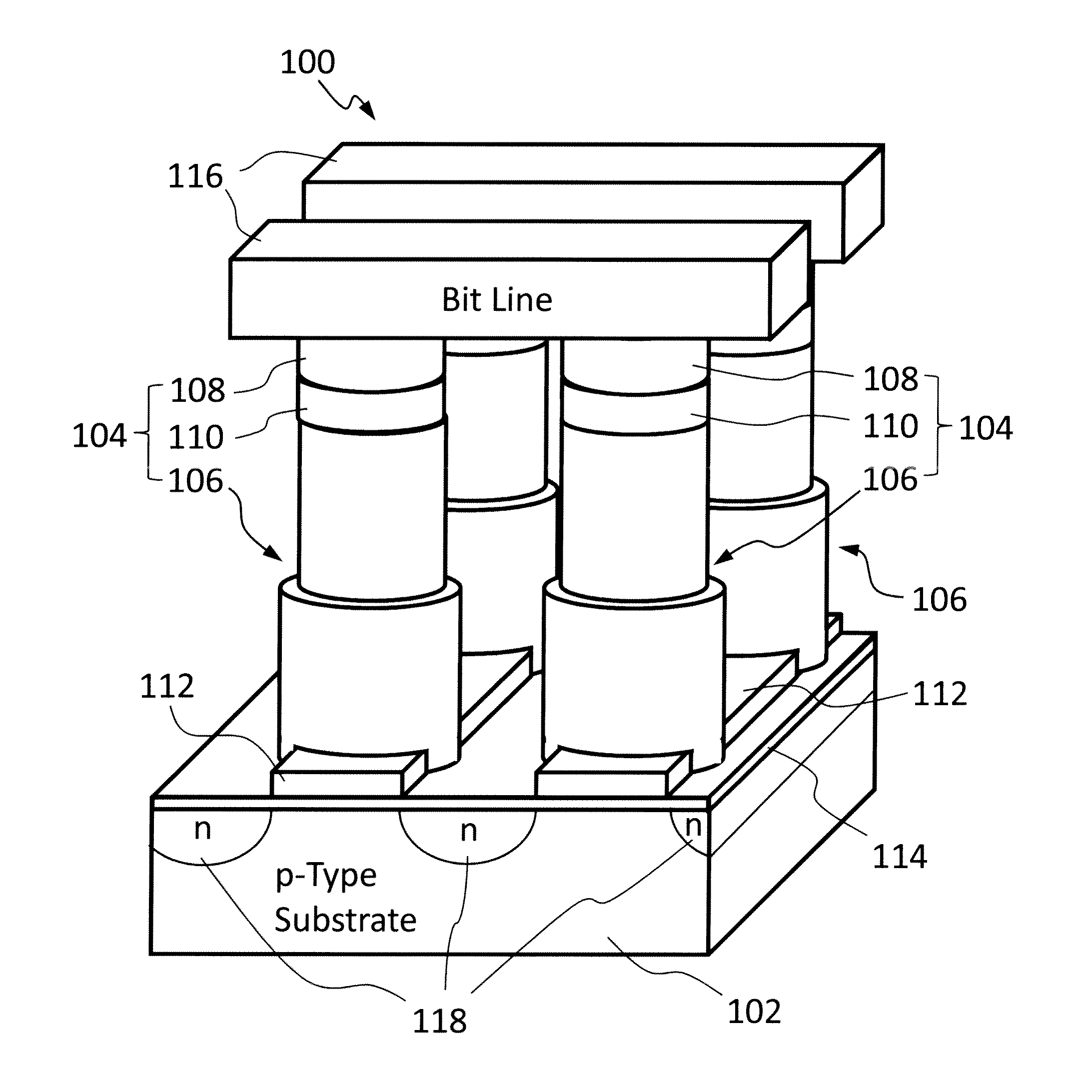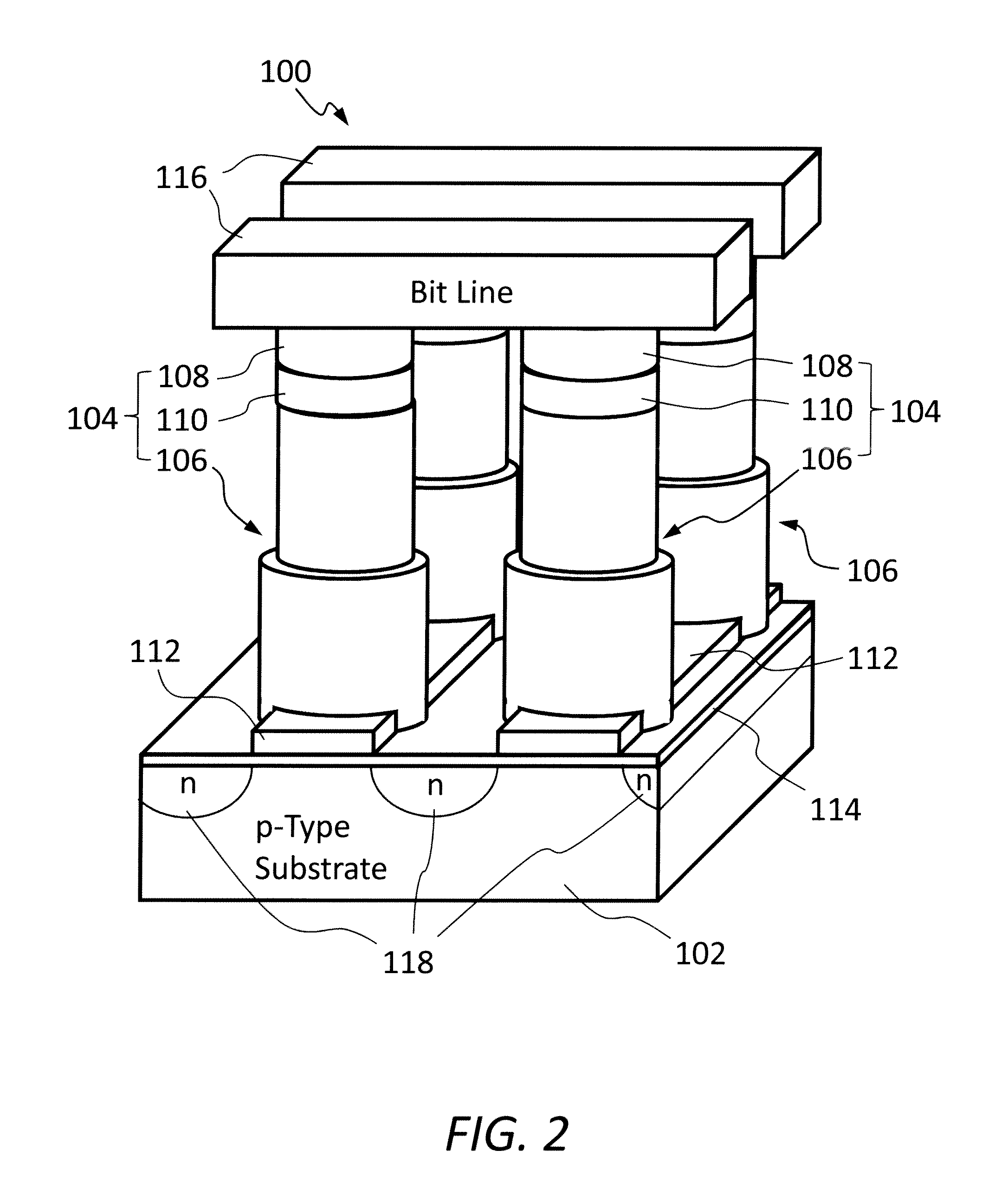Resistive memory device having vertical transistors and method for making the same
a technology of resistive memory and transistor, which is applied in the direction of digital storage, semiconductor devices, instruments, etc., can solve the problems of affecting the performance affecting the operation of the memory device, so as to overcome the current drivability and reduce the size of the resistive memory cell
- Summary
- Abstract
- Description
- Claims
- Application Information
AI Technical Summary
Benefits of technology
Problems solved by technology
Method used
Image
Examples
Embodiment Construction
[0021]The present invention overcomes the current drivability and punch through current leakage issues associated with the conventional selection transistor as the feature size shrinks Moreover, the present invention also reduces the resistive memory cell size to 4F2 by using a novel cell design that includes a vertical selection transistor, which has a conductive channel oriented perpendicularly to a substrate therebeneath.
[0022]An embodiment of the present invention as applied to a resistive memory device having an array of memory cells will now be described with reference to FIG. 2. In this drawing, the insulation material separating various elements is omitted for reasons of clarity. The illustrated memory device 100 comprises a semiconductor substrate 102 having a p-type conductivity; a plurality of memory cells 104 formed on the semiconductor substrate 102 in an array, each of the memory cells 104 includes a vertical selection transistor 106, a resistive memory element 108, an...
PUM
 Login to View More
Login to View More Abstract
Description
Claims
Application Information
 Login to View More
Login to View More - R&D
- Intellectual Property
- Life Sciences
- Materials
- Tech Scout
- Unparalleled Data Quality
- Higher Quality Content
- 60% Fewer Hallucinations
Browse by: Latest US Patents, China's latest patents, Technical Efficacy Thesaurus, Application Domain, Technology Topic, Popular Technical Reports.
© 2025 PatSnap. All rights reserved.Legal|Privacy policy|Modern Slavery Act Transparency Statement|Sitemap|About US| Contact US: help@patsnap.com



